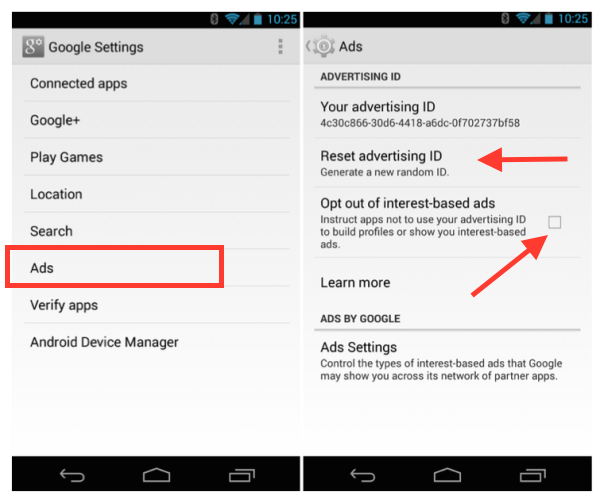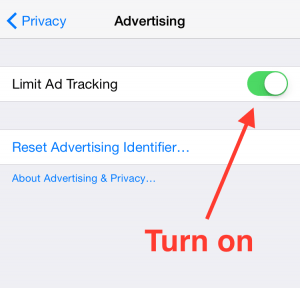["Open Mike" is the Editorial Page of TOP, expressing Yr. Hmbl. Editor's own idiosyncratic opinions exclusively. Readers are neither required nor expected to agree! Visitors are encouraged not to take umbrage! Open Mike appears on Wednesdays on TOP.]
-
For the last 20 years we've been amusing ourselves by demanding better and better digital cameras. And we got everything we ever asked for and more. Cameras now have everything. Absolutely everything. Except one thing.
There's just one single, solitary feature still missing.
See if you remember any of this. Twenty years ago*, we really wanted digital to be just as good as film—not almost as good as, but just as good as. It seemed like a tall order...for a time. First we wanted more pixels, because there just wasn't enough resolution—the first digital camera I used had 640,000 pixels; at the time, the "megapixel" era—exotic term—was still in the future. We needed more accurate colors, because reds were too saturated. We needed better uprezzing programs, so we could make normal 11x14-sized prints. Pro cameras cost $25,000 and amateur digicams had teeny tiny little-fingernail-sized sensors, so we wanted the good cameras to be affordable and the tiny-sensor cameras to have larger sensors. For a little while, digital only looked good at low ISOs, and we realized that high-speed films could be shot at higher ISOs than digital, and we wanted digital to match or exceed that. That period didn't last terribly long. Image sharpening was so important, Bruce Fraser wrote an indispensable book about it. We needed bigger buffers so we could shoot at the camera's higher frame rate for more than just a few shots. We needed cheaper and more capacious cards. I was a cheapskate and waited, so the first one-gigabyte CF card I bought cost $150...used. There were all sorts of proprietary recording media—remember SmartMedia cards? Memory Sticks? We needed better "throughput," so the camera didn't need to "think" for so long when you turned it off, and so you didn't risk losing shots because you turned it off too soon. For that matter, we wanted faster turn-on times. Then we realized that even though autofocus was getting pretty fast, that was only in good light—we needed better autofocus in low light. Ditto the ability to measure exposure—it worked fine in good light but not so much in poor light. That needed to get better. "Shadow noise" was the big issue for a while—there was a lot of it, and it was ugly. Noise reduction was key for software. Of course we wanted the cameras to be affordable. We also wanted cameras that were smaller than the huge early pro cameras. We needed lenses that were "optimized for digital" and didn't result in that alarming purple fringing on objects against bright backgrounds (eventually called CA, even though sometimes it wasn't CA).
As things got better and better, our attention turned into sort of a "mop up operation." Any remaining quirks and shortcomings? Oh yeah, dynamic range (maiden name: exposure range), the ability to capture a high SBR (subject brightness range) in one shot. And, cautiously, the cameramakers along the way added features we never had before. Image stabilization, first in the lenses then in the camera bodies. Focus tracking. Camcorders were popular, so they began putting video capability in still cameras, which is so common now that everybody who wants a stills camera is forced to buy a video camera too. Focus stacking. Electronic shutter, which is silent. Face recognition and eye AF. There are a lot more, but I can't list them all because...well, I didn't care about many of them.
So what's still missing?
Only one wee little thing: they're no fun. They have everything you could possibly want, except that.
Fun is the missing "feature."
Take a recent new camera for example. (I won't name it, because it's just an one example among many, not deserving of being singled out for censure.) I'd love to love the camera, and maybe I might, but the table of contents in the manual is longer than I would want a whole manual to be. (Eleven pages.)
How long is the manual itself? 519 pages.
That's too long to read before the camera itself is completely outdated and consigned to the dustbin of history.
For me, using cameras like that is like being forced to take a test in a subject you don't enjoy.
For a hard-assed prof who won't grade on the curve.
Fun is subjective. But all my life, it's been fun to take pictures. I used to say I could have fun taking pictures with anything. My 9-year-old cousin got a Kodak disk camera for Christmas and I, ah, accidentally used up all her film before Christmas dinner. How could I do such an inconsiderate thing? Because I was having fun. (I bought new disks for her.) I photographed with a Canon Xapshot once (an early still video camera) and a 120 Agfa folder from the 1930s (my mother was born in the '30s) because they were both fun. I used a $10 Diana (now called Holga) and an 8x10 Deardorff. I had fun with cameras I bought at flea markets and cameras I bought new for thousands of dollars, cameras I borrowed and cameras I inherited. Two of the most fun cameras I ever used were the Nikon Coolpix 950 (1999, didn't own one) and the Sony F-707 (2001, owned it). I bought a Crown Graphic and took it all apart and put it back together and even that was fun.
Now? Not so much. I don't think it's just me.
What's fun? Well, fun is whatever you think it is. And yeah, some of my cameras are still fun. Some of the ones I used to think were fun would not be fun now. But today's cameras are increasingly un-fun, seemingly by design. As if by intention. Let's put it this way: fun is the one thing the camera manufacturers aren't even thinking about. It never enters their heads.
Fun needs to be the final frontier if you ask me. The cameramakers can inject new life into their offerings and save their own butts if they'd only exempt us from the exam. Not with all their cameras. Just some of them. I'm not all that sure they even know what fun is any more!
Mike
*I recently realized that the first time I used a digital camera was more than 20 years ago. Wipe the film days off the chalkboard altogether—I'm now a grizzly old graybeard in digital. There are grown adults heavily into photography today who weren't alive when I first used a digital camera. Yikes!
Original contents copyright 2019 by Michael C. Johnston and/or the bylined author. All Rights Reserved. Links in this post may be to our affiliates; sales through affiliate links may benefit this site.
(To see all the comments, click on the "Comments" link below.)
Featured Comments from:
Rip Smith: "What makes a camera fun to use? What’s missing?"
Mike replies: Simplicity, directness, responsiveness, and the possibility of complete mastery and control, of its use becoming second nature with practice. And a great viewfinder. :-)
The best film cameras were the simplest: Rollei TLR, Leica M6, Pentax Spotmatic, field view cameras, etc. No manufacturer ever, to my knowledge, has even attempted to make a digital camera that is radically simple—as simple as possible, but no simpler—yet also excellent in terms of quality, ergonomics, and responsiveness. Instead they give us great garbage heaps of configurability and call that "control," which it is not.
...It's human nature, though, I suppose, and unavoidable. It certainly is the fashion and the custom. But the manufacturers are painting themselves into a corner: they are trapped into an arms race of runaway featuritis, which in practice creates increasing amounts of frustration and dissatisfaction (i.e., no fun), and it's beginning to turn off even the mavens. I believe it started to turn off typical consumers quite some time ago now.
Jared Sebby: "I came into photography through a love of industrial design and architecture. The best products in both of those fields are often the simplest: people loved Dieter Rams' Braun products because they were clean, simple, easy to use. They loved modernism in its day for many of the same reasons—function was considered more important than form, and so form was plain, but functional.
"Photography doesn't really have that kind of pervasive design ethos now—Leica, leaning into their Bauhaus-adjacent heritage, delivers it in spades, but other manufacturers seem too afraid to take the same steps, too afraid of losing one tool on the Swiss army knife they produce to imagine digital cameras without all the fancy gadgets. They don't want to alienate one subset of photographers, so they make cameras for everyone and it's a perfect fit for almost nobody.
"I'm reminded of camera reviews by Andrew Kim, a product designer who formerly ran minimallyminimal and now works for Apple after stints at Microsoft and Tesla, who prioritized the feel of a camera and its simplicity over what it could do. His concept camera had a dual-action exposure dial and shutter button, a screen, and nothing else. My ideal camera, the millennial that I am, is a slab of aluminum with a shutter button, combined speed and ISO dial, interchangeable lenses, and an electronic viewfinder. Even better if it doesn't have menus and can only shoot Raw."
Michael Fewster: "Along the same lines, I have recently been involved in discussions about suitable cameras for beginners. In my humble opinion a beginner needs to get their head around ISO, shutter speed and f-stop and the relationship between those controls and the changes they make to an image. I would be looking for a camera with dedicated f-stop control, preferably on the lens barrel, a dedicated ISO control and a dedicated shutter speed control. Those basics are the things that give control and fun. I'd also recommend buying a secondhand camera while learning and then maybe move on to something more sophisticated once the user knew what they wanted in a camera and how to program those controls where they wanted them for their purposes, if that is the way they then wanted to go. What camera would you and other readers recommend for those starting on the photo journey? It seems to me to be a similar question to Mike's request for fun."
Jnny: "Phone cameras are still fun."
John Reynolds: "Re 'No manufacturer ever, to my knowledge, has even attempted to make a digital camera that is radically simple—as simple as possible, but no simpler—and also excellent in terms of quality, ergonomics, and responsiveness.' I have a Leica M Edition 60, it's all the above, and yes, it's fun!"
Pierre Charbonneau: "So true. I use for work the essential pro DSLRs. They are very potent for sure. No doubt on reliability either. I never use one of them on a day off. Instead, the analog Leica MP, a old Chinese Seagull Twin lens, or a Fuji X100 comes to the journey. This last one is not the simplest to set up, offering so may options. But when this has been resumed, the actual shooting is most entertaining. Clear finder, focus quick and close, files are malleable and robust, and the camera is light and pretty. These three cameras make the bill as fun cameras for me. And what I look for as an amateur is having fun!"
Chris: "I found fun when I moved to a Fuji X-E3 with 27mm ƒ/2.8, set to Velvia for in-camera JPEG."
Bill Allen: "This. In the words of Rob Pike, 'Less is exponentially more.'"
Mark Hobson (partial comment): "a few weeks ago, as I was sitting in the first class lounge in Union Station (Chicago)—at the mid-point of our three-city/three-train/3,000 mile trip—I overheard a conversation wherein a woman was asking for help with her new camera, a mid-level Nikon DSLR. She was desperate, inasmuch as she was on special trip for which she had purchased the camera, and as yet had been unable to make a picture. Literally, unable to make a single picture.
"I stepped up and offered to help. You might think, after nearly two decades of digital camera(s) usage [also, Mark is an accomplished professional—you met him in the post "Elephant Tongue and Hypnotized Chickens" —Ed.], it would not be a herculean/rocket science task to get her started. While I was eventually able to get her reasonably set up, there was not a single camera function for which access was intuitive. What a bad joke the whole experience was, both for her and me.
"After getting her functional (in a very rudimentary/basic fashion), off she went, reasonably happy, only to return five minutes later with another it-won't-work issue. Utterly shameful and ridiculous on the part of camera makers who have created this mess."
Mike replies: Great story. Reminds me of the possibly apocryphal story about Dylan Thomas. He had a shack on the wild, rocky Atlantic coast of Wales where he would write his poetry, sometimes allegedly writing only two lines in an entire day (possibly because another task that occupied him was his ferocious drinking). The story goes that an illiterate old woman lived nearby, and he would take his day's work and read it to her. If she didn't understand it, he would tear it up and start over.
Might not have been literally true, but it might as well be.
I wonder what it would be like if camera manufacturers began to compete with each other to see how simple and intuitive they could make their products? One test might be how long it would take for the "woman on the train" to get up and running and have an easier time with her nice camera.
And before the mavens worry, I'm not suggesting all cameras should be simple and intuitive. But some of them might reasonably be. (Some of them other than hyper-expensive Leicas.)






